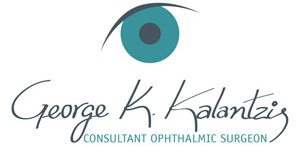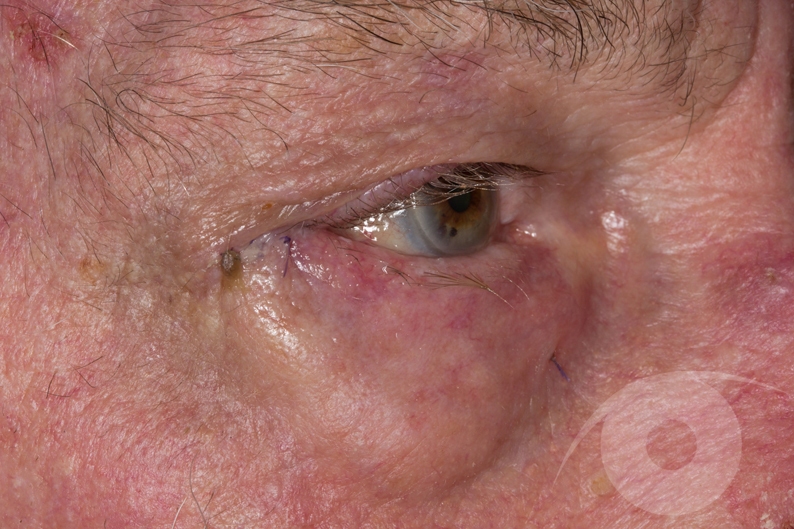Ectropion
Overview:
What is an ectropion?
An ectropion is the term used to describe the lower eyelid turning outwards and drooping away from the eye. A lower eyelid ectropion is much more common in the elderly and may affect the whole eyelid, or only the inner third.
What are the symptoms of ectropion?
The symptoms depend on the degree of ectropion, and can include the following:
- Watery eyes.
This is the most common symptom of ectropion. When the lower eyelid punctum (the tear drainage hole in the inner aspect of the eyelid) no longer sits against the surface of the eye, tear drainage from the eye is reduced. - Irritable, red and sore eyes
In the absence of full eyelid closure and incomplete tear drainage, lubrication of the ocular surface can be compromised, leading to uncomfortable, red eyes, or recurrent eye infections (conjunctivitis).
What is the cause of ectropion?
The commonest cause of ectropion is general laxity of the tissues around the eye, and of the tendons in the inner and outer corners of the eyelids. Instability of these supporting structures can cause the eyelid to rotate towards the eye (entropion) or away from the eye (ectropion). Of the two, entropion is the more uncomfortable, and potentially sight-threatening, as the eyelashes tend to rub the very sensitive front surface of the eye (the cornea).
Other disorders, such as lower eyelid trauma, contracture (scarring) of the lower eyelid e.g. following shingles, or certain skin disorders e.g. allergic dermatitis, may also cause an ectropion.
Finally, the strength and tone of the eyelids is maintained by the facial nerve, and impairment of this nerve (such as occurs in a Bell’s palsy or facial palsy) may lead to laxity of the eyelid and a secondary ectropion.
Can ectropion affect the eye, or eyesight?
As the function of the lower eyelid is to protect the eye and to lead the tears into the inner corner of the eye, where they are drained away, a lower lid ectropion can result in exposure of the lower surface of the eye, in addition to watering of the eye. Rarely, untreated ectropion can lead to corneal exposure and corneal infection. This can then pose a risk to vision.
Treatment:
How is an ectropion treated?
The management of an ectropion depends on the underlying cause. Frequently, an operation is required in which the lower eyelid is tightened at the outer corner of the eyelids. This can be done under a local anaesthetic, taking about 30 minutes. More complex cases (including those where there has been previous injury, or surgery, or a facial palsy) may require the addition of a sedative for more extensive surgery. Following surgery, the eye is usually padded for at least a day to reduce swelling, and antibiotic drops or an ointment are prescribed. A review in clinic is organised for a week or two later to check on the position of the eyelid and to remove any stitches.





